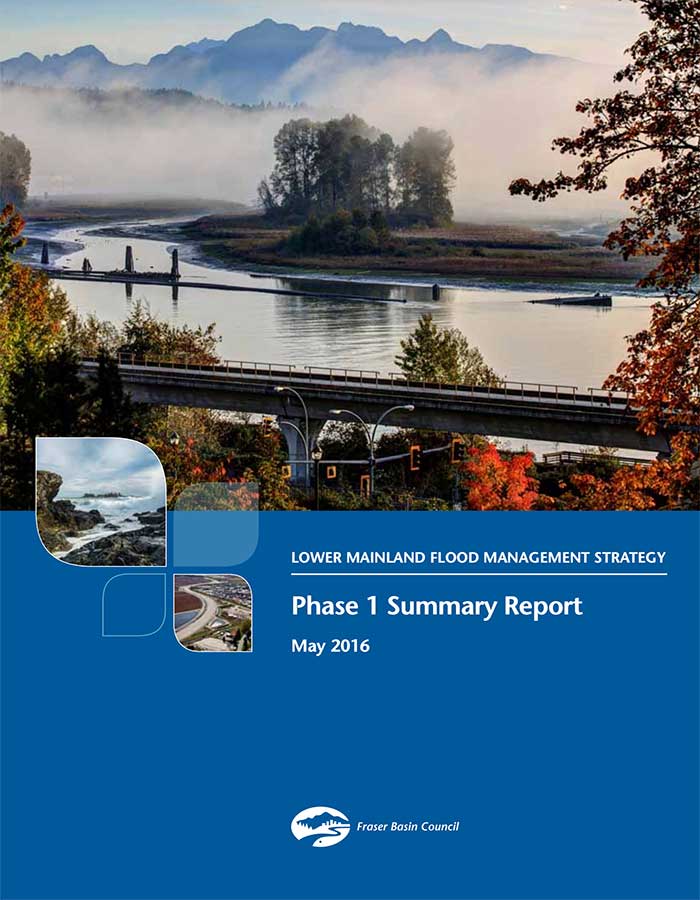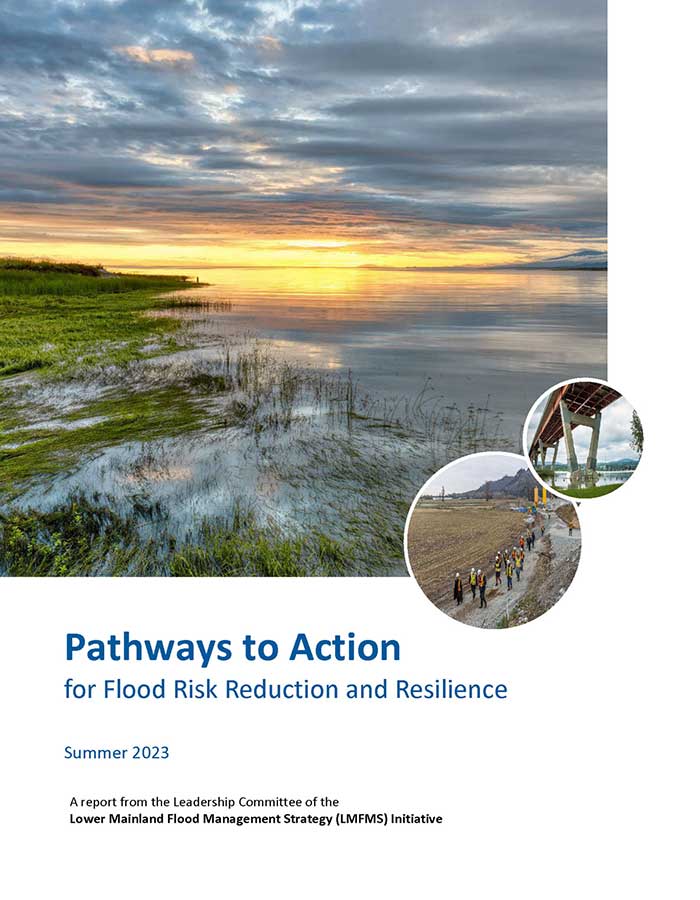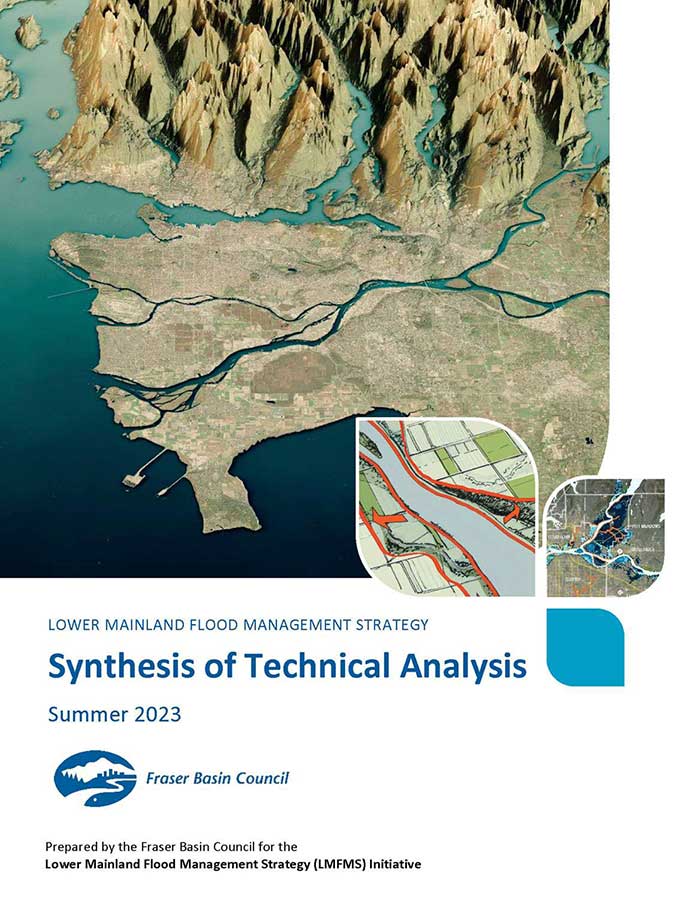Lower Mainland Flood Management Strategy
The Lower Mainland Flood Management Strategy initiative was aimed at supporting the development of a regional strategy to reduce the risks associated with Fraser River and coastal flooding and to increase the flood resilience of BC Lower Mainland communities.
A multi-governmental Leadership Committee oversaw Phase 2 of the Lower Mainland Flood Management Strategy (LMFMS) initiative. Work wrapped up with two final reports in 2023. The Province of BC has committed to a review of next steps.
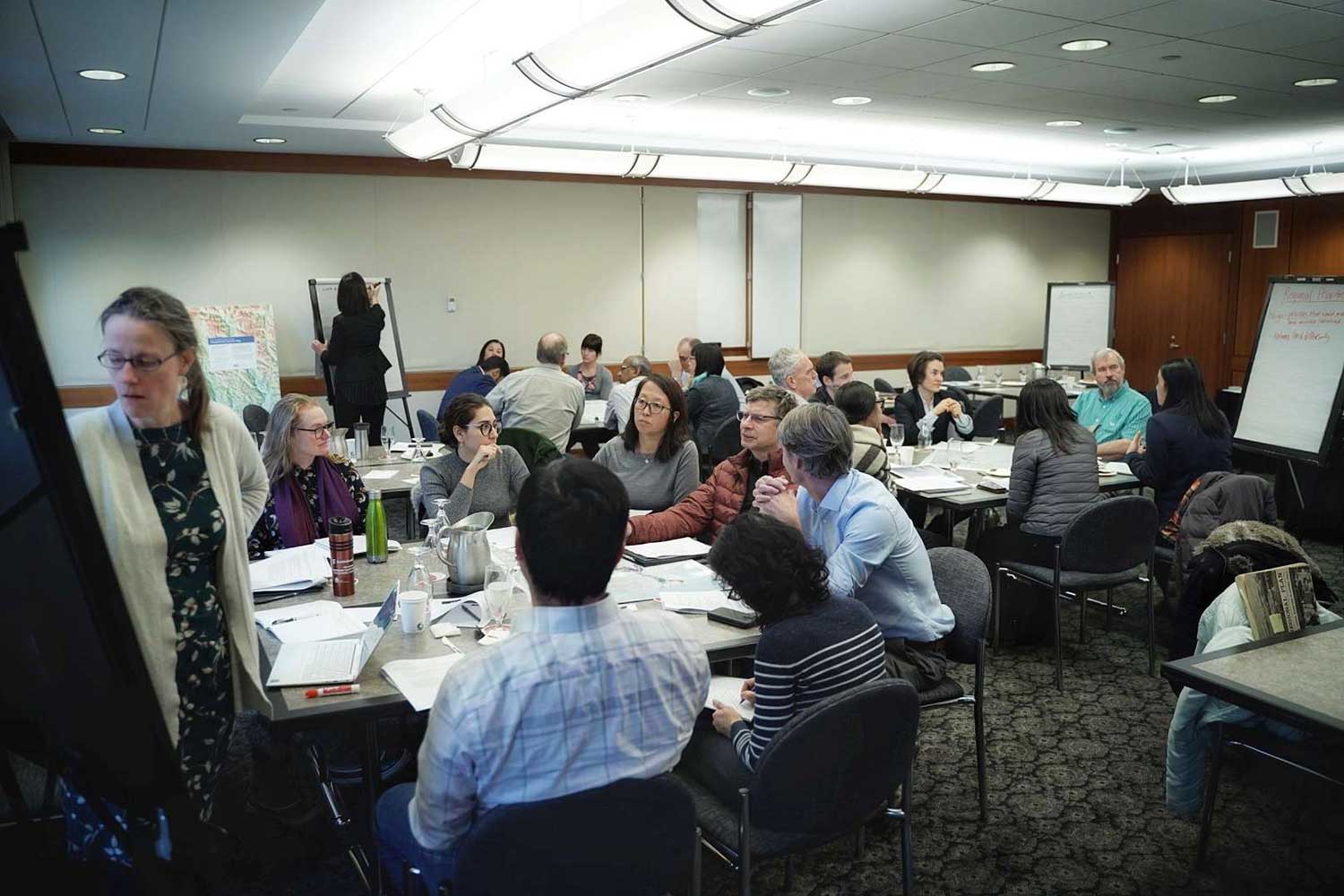
Phase 1 Highlights
Phase 1 of the Lower Mainland Flood Management Strategy (2014-2016) completed in May 2016. The work of this phase included:
The results show that there is significant risk of a large-magnitude flood in the Lower Mainland. The risk is projected to worsen over the next 85 years, both in terms of flood frequency and size, because of sea level rise and other projected impacts of climate change. If a major Fraser River or coastal flood were to occur between now and 2100, it would trigger losses estimated at $20-30 billion, which would be the largest disaster in Canadian history.
Phase 1 shows the importance of a regional strategy and a major investment in flood risk reduction. The costs of a major flood event could far outweigh the costs associated with effective flood mitigation.
The Phase 1 Summary Report provides the highlights. Visit the FloodWise website for the Phase 1 background reports and flood scenario maps.
Phase 2 Highlights
Phase 2 of the LMFMS initiative focused on more advanced and detailed technical work to enhance participants’ understanding of flood hazards and risks. Phase 2 also involved efforts to advance work on a regional strategy, through the collaboration of governments and other entities with flood-related responsibilities.
Strategic Highlights
During Phase 2 of the LMFMS, a preliminary working draft of a strategy was developed, and input was invited from governments having various flood responsibilities. The process identified areas of consensus but also differences. The Pathways to Action report sets out the background and 10 recommendations to frame the next steps, including steps to advance government-to-government collaboration on flood risk reduction.
The multi-governmental leadership committee overseeing the initiative recognized that more was needed to advance the work. For example, it was important to align regional or subregional flood planning in the Lower Mainland with the upcoming BC Flood Strategy. It also recognized the need to co-create flood risk reduction approaches with First Nations, especially in the context of the United Nations Declaration on the Rights of Indigenous Peoples (UNDRIP).
The Province of BC has committed to following up to discuss the Pathways to Action report with First Nations and other orders of government. One of the early priorities for flood risk reduction recommended in the Pathways report is protecting or otherwise increasing the flood resilience of critical infrastructure and essential services in the region.
The Pathways to Action report summarizes progress to date on key issues relevant to flood management. In addition, it identifies opportunities for all orders of governments to move forward collaboratively to reduce flood risk, increase resilience and adapt to climate change.
The Report and recommendations were developed at the direction of the LMFMS Leadership Committee, with input from a multi-jurisdictional Pathways to Action Working Group and the Emergency Planning Secretariat
Technical Highlights
The following projects were completed in Phase 2:
The Phase 2 technical work created important resources for governments in the region. To learn more, see the Synthesis of Technical Analysis report below. Find all the Phase 2 maps and reports on the FloodWise site.
The Synthesis of Technical Analysis report summarizes the information and tools developed and shared with flood authorities and other organizations through the LMFMS initiative respecting Fraser River and coastal flood hazards and risks. The report was prepared by the Fraser Basin Council.
Related Summary Materials on Phase 2 Final Reports
Visit FloodWise
For all the reports, flood scenario maps (Fraser River freshet and coastal flood scenarios), videos and other deliverables in Phases 1 and 2 of the Lower Mainland Flood Management Strategy initiative, visit floodwise.ca.

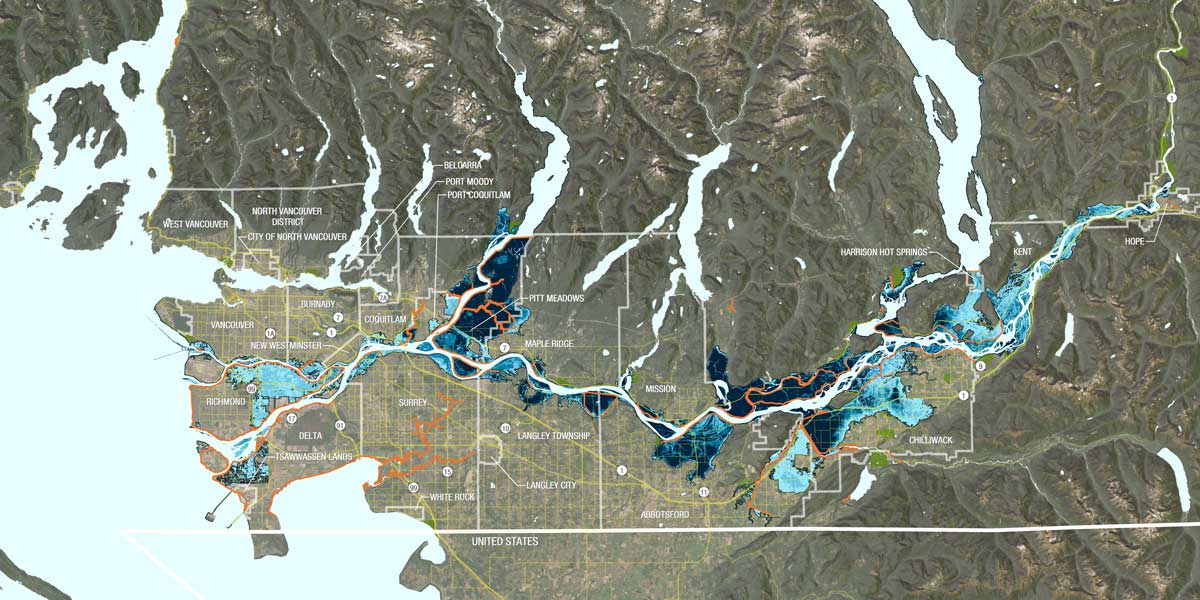
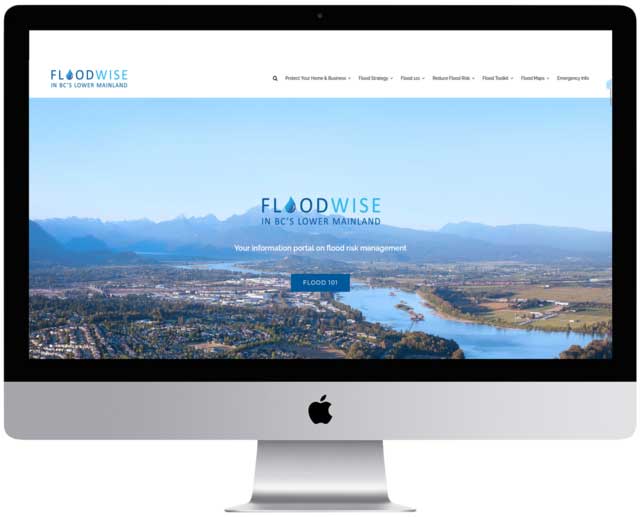
FloodWise Quick Links
Contact
Steve Litke
Director, Water Programs
Top banner image: Flooding in the Fraser Valley, 2021. Photo: Province of British Columbia.



